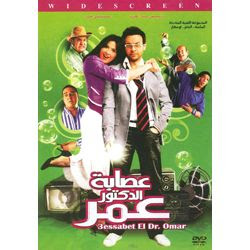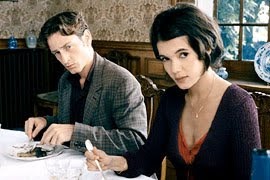Started this with great expectations, but all the best bits were saved for last.
“The scandalous lives of Manhattan’s elite fell into a routine the third time around. With the usual scandals, betrayals, and secrets, season three had nothing we had not seen before on Gossip Girl… well, until the end.”
The Rundown
Behind the name: Based on a series of books, of the same name
Country: The United States of America, 2010
Genre: Teen Drama
Broadcast by: The CW (Merger of CBS Corp. & Warner Bros.)
Directors: J. Miller Tobin, Norman Buckley, Jean De Segonzac, Allison Maclean, Mark Piznarski, Janice Cooke-Leonard, and many, many more
Compare to: 90210, The OC, Skins (remotely), Boys Before Flowers
Hate it or Love it? Love it.
Synopsis in a Sentence: Follow the lives of conniving rich kids with experience far older than their age in sex, scandal and affluence as they transition from high school to college.
After two full seasons of Gossip Girl, the third season could be more creative. It was quite the same base theme: “hidden” secrets are revealed, there’s a fair bit of conniving performed by everyone, and the characters exchange lovers at least three or four times in one year. But of course, a lot happens in-between all these.
On Writing: The Plot
Couldn’t be more diverse. Every episode was written by superstar writers like John Stephens (producer of The OC & Gilmore Girls), Sara Goodman (creator of Reunion, Army of One) and Leila Gerstien (writer for The OC, Eli Stone & Tempting Adam) so as you can expect, we weren’t bored by the story, but with about 65 episodes of Gossip Girl under our belts, no scandal can be too hot for us to handle. The writers really couldn’t expect us to flinch over the so-called “secrets” that were revealed. They’ve trained us well. Maybe, a bit too well, because throughout Season 3, we were able to sit comfortably with the plot of the story and not flinch at a new “scandal” in the works. There were many good parts, but form the third instalment of Gossip Girl, we can expect more.
(4/5)
On Acting: The Cast
Season 3 was the season of stars, with appearances by Hillary Duff, Lady Gaga and Tyra Banks. Hillary was well—Hillary. She’s almost the same in every production. Lady Gaga performed as herself on-stage, so there’s nothing new about that, and as for Tyra Banks, we were aware that she was aware that she supposed to be an actress in the episodes she was present.
As for the main cast, they’re good actors, and they’ve grown into their characters over the years. So we can say they can only get better, not worse. In Season 3, we can see what leads Taylor Momsen to think she’s actually older than 16, as she her character, Jenny Humphrey makes some “adult decisions”. Chuck Bass is still an ass, but this time, one with a heart. He’s grown professionally and emotionally, and so has Ed Westwick, who defines this character. Blair Woldorf is weak in Season 3, and Leighton Meester plays her emotions without error. Blake Lively, who seems to relay the same character in virtually every production (see Accepted, The Sisterhood of the Traveling Pants), does so again as Serena van der Woodsen, but relays her character well. Overall, a growing cast with promise.
(4/5)
On Wardrobe: The Fashion
Sometimes, designers forget that they actually design clothes for people, so as usual, with top designers on the list, there were some pieces that normal humans like you and me would never wear. Then there were those pieces that you would want to sell your house for. Such is fashion, and such was the fashion on Gossip Girl, season 3. Most of us could relate to Serena Van Der Woodsen’s sense o style, the rich and famous on the Upper-East and West-Sides of Manhattan can relate to Blair Waldorf’s flair for vintage-style fashion, while the demented and depressed may hail Jenny Humphrey as their queen for her demurely inspiring style. Something for everyone! As for the men, we learned that sandals are for losers.
(4/5)
On Resolution: The Conclusion
It may have started a bit too slowly for some of us, but it ended more than satisfactorily for all of us. The best of the entire season was saved for last. The season finale, titled, “The Last Tango, then Paris” was superb!
As season 3 attracted about 2 million viewers weekly (in America alone), with dwindling numbers as the season went on, the producers might have realized that they had to play their best card on the finale. Enter super-writers, Stephanie Savage & Joshua Safran to save the season, with real scandal, betrayal, and genuine secrets! Leaving director, J. Miller Tobin, to direct all the drama toward the right direction. We explored new facets for all the members of the main cast. Now that’s the Gossip Girl we know!
(4.5/5)
The Verdict: Season 4, here we come! We predict that Gossip Girl will go on for at least, 7 seasons.
Overall Score = 16.5/20
Watch Gossip Girl [http://www.amazon.com/Gossip-Girl-Complete-Third-Season/dp/B002JVWRBS/ref=sr_1_1?ie=UTF8&s=dvd&qid=1278135405&sr=8-1]
*Note: All web sources provided from this source are legal.


.jpg)

















